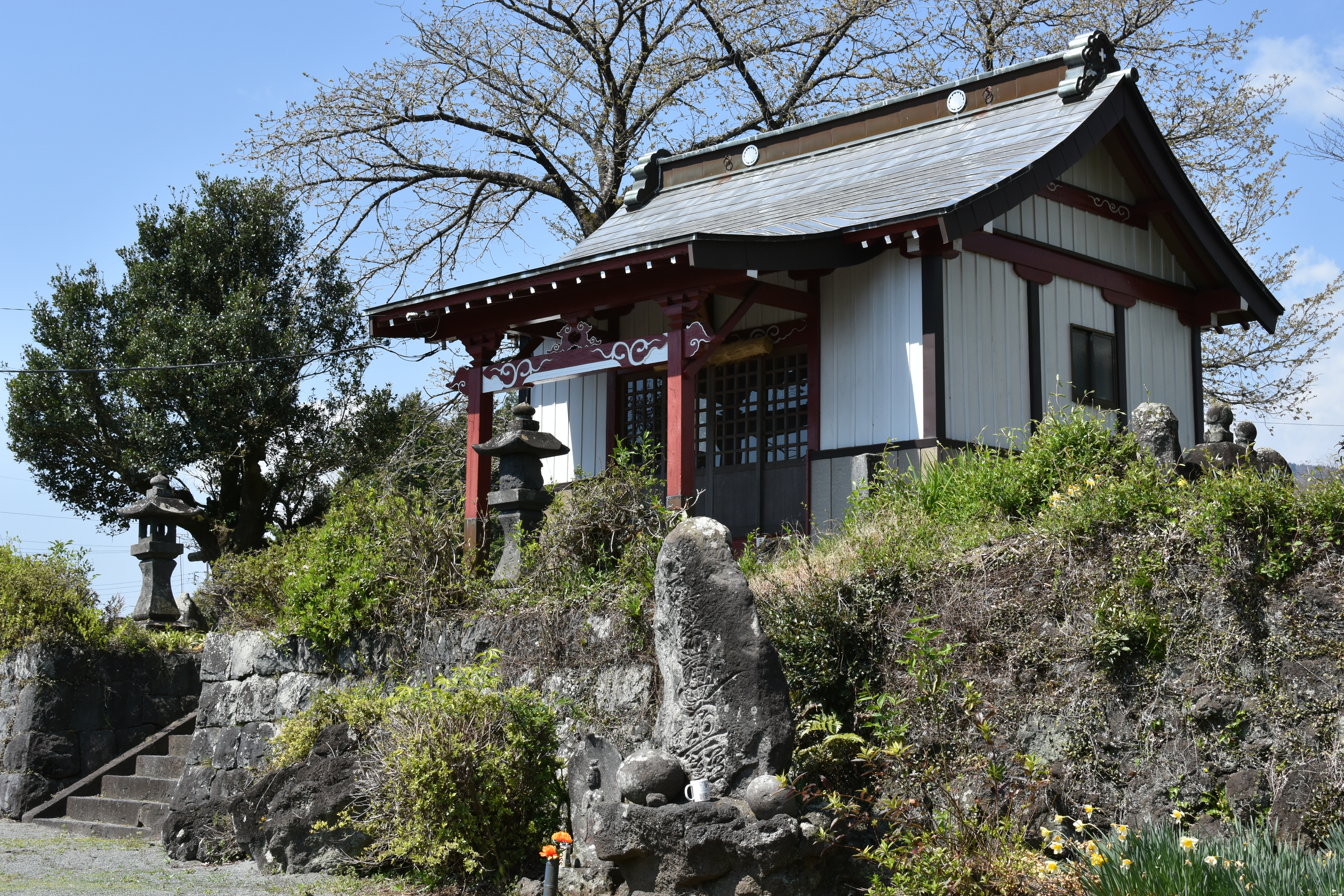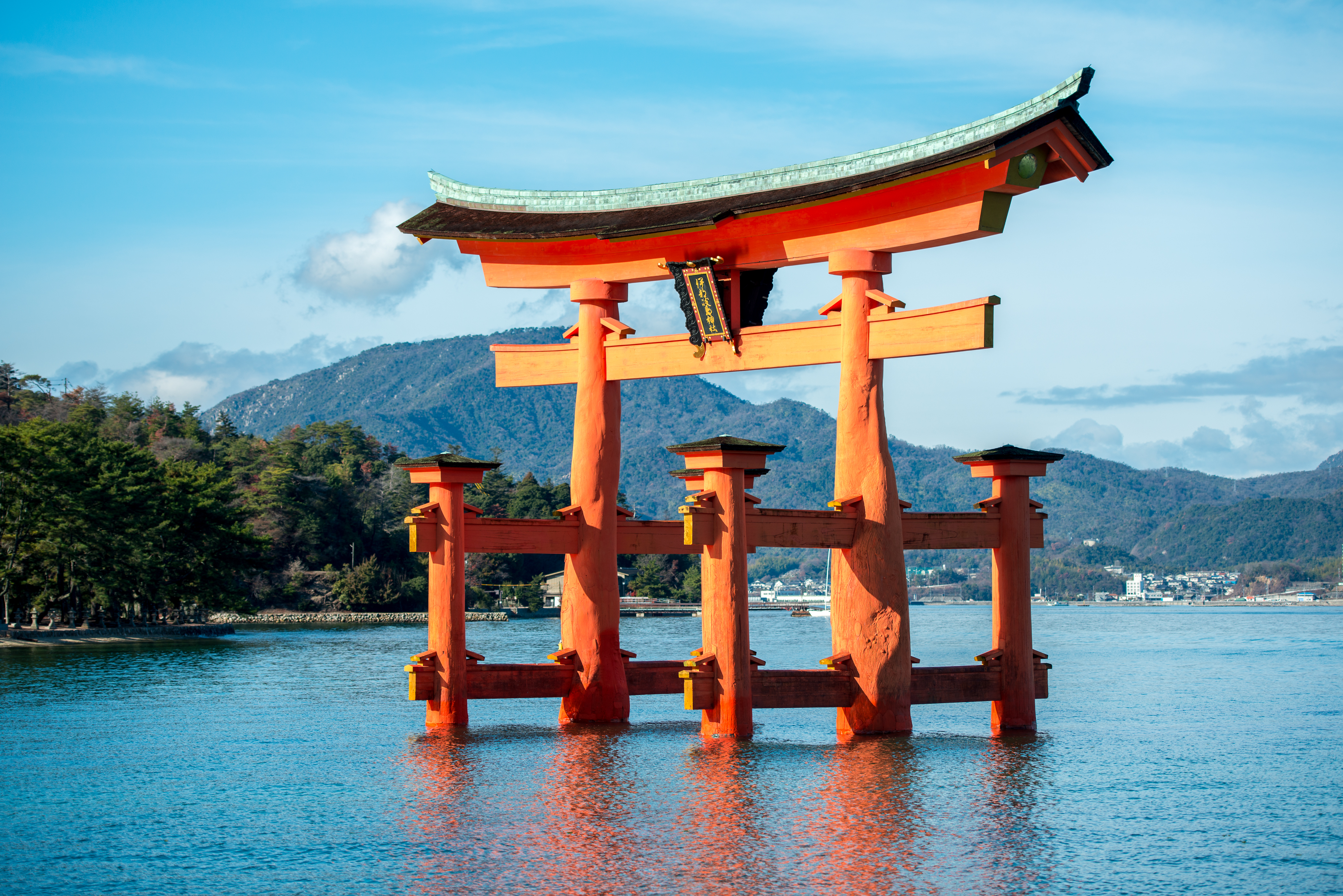|
Soga Hachiman Shrine
Soga Hachiman Shrine (曽我八幡宮, ''Soga Hachiman-gū'') is a Shinto shrine in Kamiide, Fujinomiya, Shizuoka Prefecture, Japan. The shrine enshrines Emperor Ōjin, Soga Sukenari, Soga Tokimune and Tora Gozen. There are three Soga Hachiman '' bunsha'', or branch shrines, in Fujinomiya. History According to ''Fuji-gun Jinja Meikan'', the shrine deities are Emperor Ōjin, Soga Sukenari, Soga Tokimune and Tora Gozen, with statues of the four enshrined in the shrine. On the altar, there are wooden statues of the Soga brothers and Tora Gozen, with an equestrian statue of Emperor Ōjin in the middle. According to the shrine legend, Minamoto no Yoritomo was moved by the filial piety of the Soga brothers during the Revenge of the Soga Brothers incident. Yoritomo is said to have sent Hatakeyama Shigetada to order Watanabe Mondo, a master craftsman in the area, to enshrine the spirits of the brothers in 1197. The shrine is said to have been built by Mondo. The statue of Emperor Ōji ... [...More Info...] [...Related Items...] OR: [Wikipedia] [Google] [Baidu] |
Shinto
Shinto () is a religion from Japan. Classified as an East Asian religion by scholars of religion, its practitioners often regard it as Japan's indigenous religion and as a nature religion. Scholars sometimes call its practitioners ''Shintoists'', although adherents rarely use that term themselves. There is no central authority in control of Shinto, with much diversity of belief and practice evident among practitioners. A polytheistic and animistic religion, Shinto revolves around supernatural entities called the . The are believed to inhabit all things, including forces of nature and prominent landscape locations. The are worshiped at household shrines, family shrines, and ''jinja'' public shrines. The latter are staffed by priests, known as , who oversee offerings of food and drink to the specific enshrined at that location. This is done to cultivate harmony between humans and and to solicit the latter's blessing. Other common rituals include the dances, rites of pa ... [...More Info...] [...Related Items...] OR: [Wikipedia] [Google] [Baidu] |
Revenge Of The Soga Brothers
The Revenge of the Soga Brothers (曾我兄弟の仇討ち, ''Soga kyōdai no adauchi'') was a vengeance incident on June 28, 1193, during the Fuji no Makigari hunting event arranged by shogun Minamoto no Yoritomo. The Soga brothers, Soga Sukenari and Tokimune assassinated Kudō Suketsune, the killer of their biological father. The incident included a failed assassination attempt on the shogun, and resulted in many deaths and injuries of unrelated participants. It is known as one of the three major ''adauchi'' vendetta incidents in Japan, alongside Akō vendetta (by the 47 Rōnin) and the Igagoe vendetta. The incident is recorded in the historical chronicle '' Azuma Kagami'' and the epic tale of '' Soga Monogatari'', and has been popularized in popular culture. Caused by Kudō Suketsune's accidental killing of Soga brothers' father Kawazu Sukeyasu due to an inheritance disagreement unrelated to Sukeyasu, the Soga brothers assassinated Suketsune during the Fuji no Makigari hu ... [...More Info...] [...Related Items...] OR: [Wikipedia] [Google] [Baidu] |
Eagle
Eagle is the common name for many large birds of prey of the family Accipitridae. Eagles belong to several groups of genera, some of which are closely related. Most of the 68 species of eagle are from Eurasia and Africa. Outside this area, just 14 species can be found—2 in North America, 9 in Central and South America, and 3 in Australia. Eagles are not a natural group but denote essentially any kind of bird of prey large enough to hunt sizeable (about 50 cm long or more overall) vertebrates. Description Eagles are large, powerfully-built birds of prey, with heavy heads and beaks. Even the smallest eagles, such as the booted eagle (''Aquila pennata''), which is comparable in size to a common buzzard (''Buteo buteo'') or red-tailed hawk (''B. jamaicensis''), have relatively longer and more evenly broad wings, and more direct, faster flight – despite the reduced size of aerodynamic feathers. Most eagles are larger than any other raptors apart from some vultures. The ... [...More Info...] [...Related Items...] OR: [Wikipedia] [Google] [Baidu] |
Bunrei
is a Shinto technical term that indicates both the process of dividing a Shinto ''kami are the deities, divinities, spirits, phenomena or "holy powers", that are venerated in the Shinto religion. They can be elements of the landscape, forces of nature, or beings and the qualities that these beings express; they can also be the ...'' to be re-enshrined somewhere else (such as a house's '' kamidana''), and the spirit itself produced by the division. For details, see the article about the similar term Kanjō. References Traditional rituals of East Asia Shinto Shinto terminology {{Shinto-stub ... [...More Info...] [...Related Items...] OR: [Wikipedia] [Google] [Baidu] |
Soga Hachiman Shrine3
Soga may refer to: People * Soga clan, a Japanese clan of the Yamato period * Soga clan (Sagami Province), a Japanese clan * Soga people, of the Busoga kingdom in present-day Uganda * Machiko Soga, Japanese voice actress * Soga Tokimune, Japanese samurai * Soga Sukenari, Japanese samurai Places * Soga (river), a tributary of the Sogozha in Poshekhonye District, Yaroslavl Oblast, Russia * Soga, Tanzania, a railway station in Tanzania * Soga, an island in the Bissagos Islands off the coast of Guinea-Bissau * Soga Station, a railway station in Japan Other * Soga language, a Bantu language spoken in Uganda and the native language of the Soga people * Soga Monogatari, a Japanese tale of the Soga brothers * Sale of Goods Act (SOGA), legislation in the United Kingdom relating to the sale of goods * Soga, a percussion instrument See also * Busoga Busoga ( Lusoga: Obwakyabazinga bwa Busoga) is a kingdom and one of four constitutional monarchies in present-day Uganda. The kin ... [...More Info...] [...Related Items...] OR: [Wikipedia] [Google] [Baidu] |
Kabuki
is a classical form of Japanese dance-drama. Kabuki theatre is known for its heavily-stylised performances, the often-glamorous costumes worn by performers, and for the elaborate make-up worn by some of its performers. Kabuki is thought to have originated in the very early Edo period, when founder Izumo no Okuni formed a female dance troupe who performed dances and light sketches in Kyoto. The art form later developed into its present all-male theatrical form after women were banned from performing in kabuki theatre in 1629. Kabuki developed throughout the late 17th century and reached its zenith in the mid-18th century. In 2005, kabuki theatre was proclaimed by UNESCO as an intangible heritage possessing outstanding universal value. In 2008, it was inscribed in the UNESCO Representative List of the Intangible Cultural Heritage of Humanity. Etymology The individual kanji that make up the word ''kabuki'' can be read as , , and . ''Kabuki'' is therefore sometimes tran ... [...More Info...] [...Related Items...] OR: [Wikipedia] [Google] [Baidu] |
Soga Monogatari
''Soga Monogatari'' () is a Japanese military chronicle-tale based on the vengeance incident, Revenge of Soga Brothers. The story is often known as ''The (illustrated) Tale of the Soga Brothers'' or ''The Revenge of the Soga Brothers''. It is sometimes written as ''Soga Monogatari Zue'' (''The Tale of the Soga brothers in pictures''). It is regarded by some as the last of the ''gunki monogatari'' or great "war tales". The brothers are Soga Sukenari and Soga Tokimune, Sukenari being the older of the two. When the boys were younger they were known as Ichimanmaru and Hakoomaru. In Japanese the Soga brothers are described as ''Soga kyodai''. Their names are also written as Soga no Gorō and Soga no Jūrō. The name Soga is the name of their stepfather, which became their surname after their mother remarried. The name of their biological father was Kawazu-Saburō. Plot Events take place in Japan in the 12th century. The general accepted version is that the father of the two boys ... [...More Info...] [...Related Items...] OR: [Wikipedia] [Google] [Baidu] |
Edo Period
The or is the period between 1603 and 1867 in the history of Japan, when Japan was under the rule of the Tokugawa shogunate and the country's 300 regional ''daimyo''. Emerging from the chaos of the Sengoku period, the Edo period was characterized by economic growth, strict social order, isolationist foreign policies, a stable population, perpetual peace, and popular enjoyment of arts and culture. The period derives its name from Edo (now Tokyo), where on March 24, 1603, the shogunate was officially established by Tokugawa Ieyasu. The period came to an end with the Meiji Restoration and the Boshin War, which restored imperial rule to Japan. Consolidation of the shogunate The Edo period or Tokugawa period is the period between 1603 and 1867 in the history of Japan, when Japan was under the rule of the Tokugawa shogunate and the country's regional ''daimyo''. A revolution took place from the time of the Kamakura shogunate, which existed with the Tennō's court, to th ... [...More Info...] [...Related Items...] OR: [Wikipedia] [Google] [Baidu] |
Mongaku
Mongaku (文覚) was a Japanese samurai and Shingon Buddhist priest of the late Heian and early Kamakura period. He was a close associate of shogun Minamoto no Yoritomo, having contributed to the declaration of the Genpei War. Myōe was the disciple of his disciple Jōkaku. His secular name, before ordination, was Endō Moritō. He is also known as Mongaku Shōnin. Life Mongaku was born the son of Endō Mochitō, a samurai in the Watanabe faction of the Settsu Genji clan (a branch of the Minamoto clan). He initially served in the Imperial Palace Guards of the North Side. He fell in love with Kesa, the wife of Minamoto no Wataru, but killed her by accident. Out of repentance, he then ordinated as a priest, visiting sacred places across the country. Mongaku moved to live at Jingo-ji temple in 1168, and participated in its restoration work motivated by his reverence towards Kūkai. In 1173, he requested a manorial temple estate for Jingo-ji from Cloistered Emperor Go-Shiraka ... [...More Info...] [...Related Items...] OR: [Wikipedia] [Google] [Baidu] |
Hatakeyama Shigetada
was a samurai warlord of the late Heian and early Kamakura period Japan. He fought in the Genpei War, though originally for the Taira clan, he switched sides to the Minamoto clan for the Battle of Dan-no-ura, and ended the war on the winning side.Nussbaum, Louis Frédéric ''et al'' (2005). "Hatakeyama Shigetada" in His Dharma name was Jissan Shūshin Daikoji (實山宗眞大居士). Biography Following the war, when his son Shigeyasu was killed by Hōjō Tokimasa, Shigetada spoke up. The reward for this temerity was death, along with the rest of his family. His brave attempt to defend his honor, along with various other acts of strength and skill are recorded in the '' Heike Monogatari'' and other chronicles of the period. In an anecdote from the '' Heike monogatari'', he is described as competing, along with a number of other warriors, to be the first across the Uji River. When his horse is shot in the head with an arrow, he abandons the creature and uses his bow as a s ... [...More Info...] [...Related Items...] OR: [Wikipedia] [Google] [Baidu] |
Filial Piety
In Confucianism, Chinese Buddhism, and Daoist ethics, filial piety (, ''xiào'') (Latin: pietas) is a virtue of respect for one's parents, elders, and ancestors. The Confucian '' Classic of Filial Piety'', thought to be written around the late Warring States- Qin- Han period, has historically been the authoritative source on the Confucian tenet of filial piety. The book—a purported dialogue between Confucius and his student Zengzi—is about how to set up a good society using the principle of filial piety. Filial piety is central to Confucian role ethics. In more general terms, filial piety means to be good to one's parents; to take care of one's parents; to engage in good conduct, not just towards parents but also outside the home so as to bring a good name to one's parents and ancestors; to show love, respect, and support; to display courtesy; to ensure male heirs; to uphold fraternity among brothers; to wisely advise one's parents, including dissuading them from moral ... [...More Info...] [...Related Items...] OR: [Wikipedia] [Google] [Baidu] |







